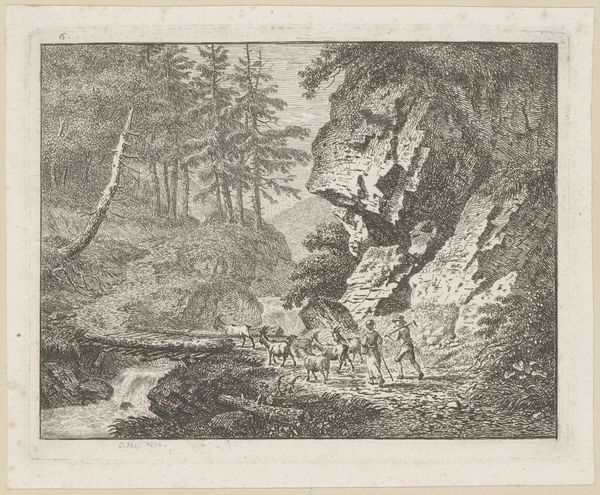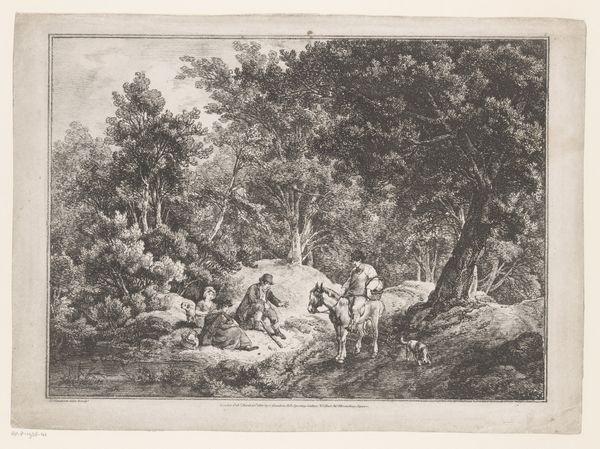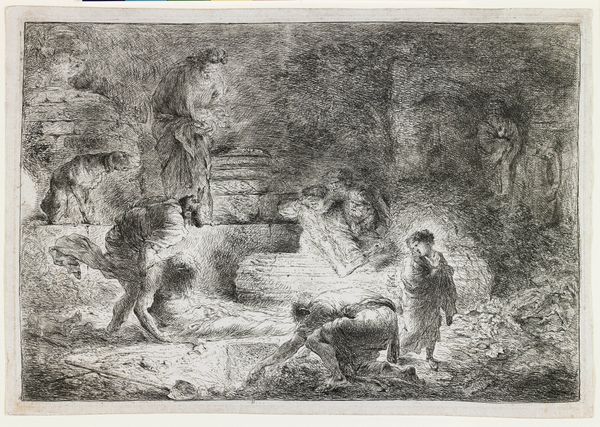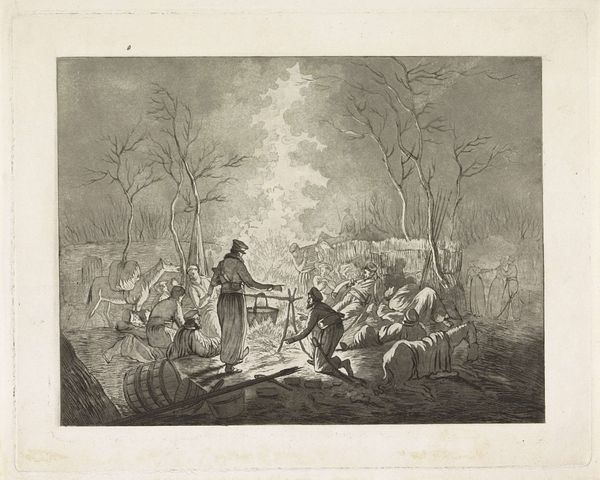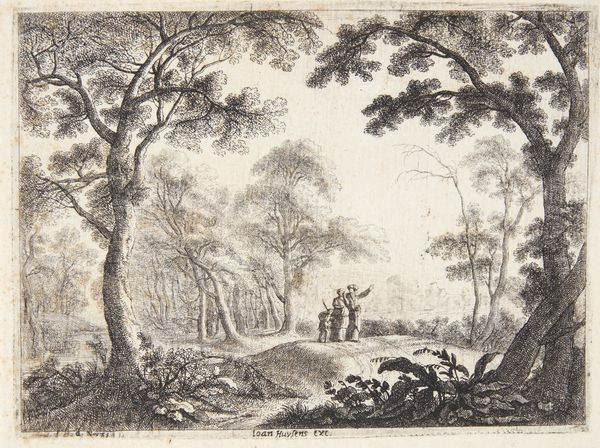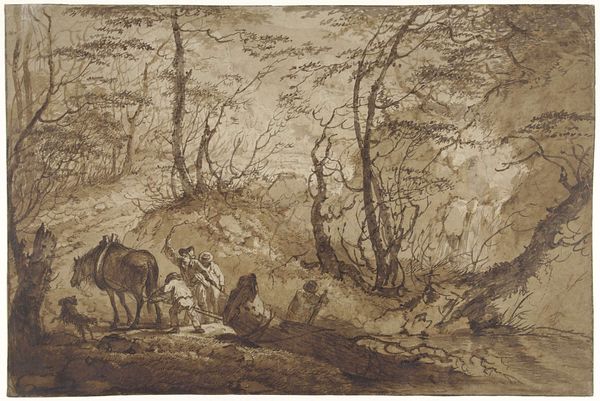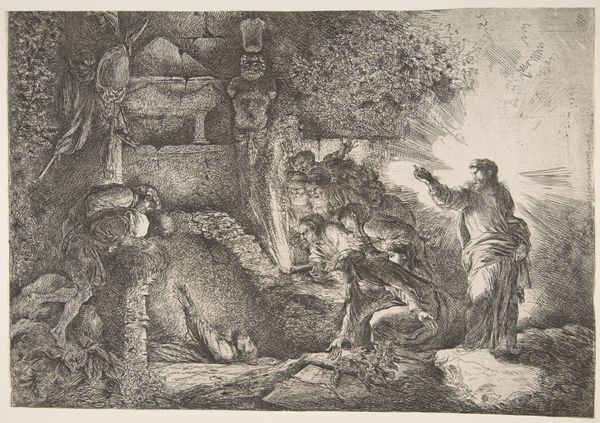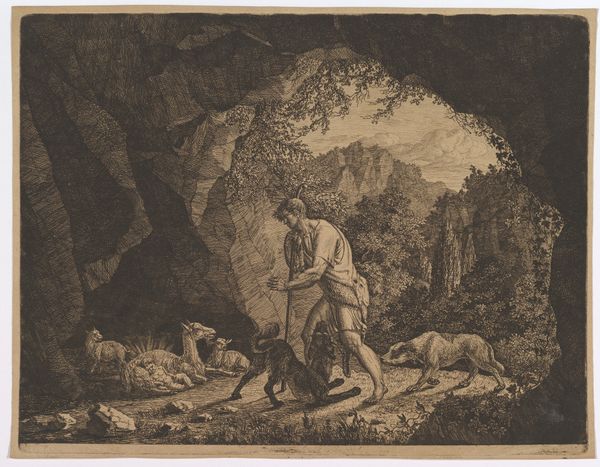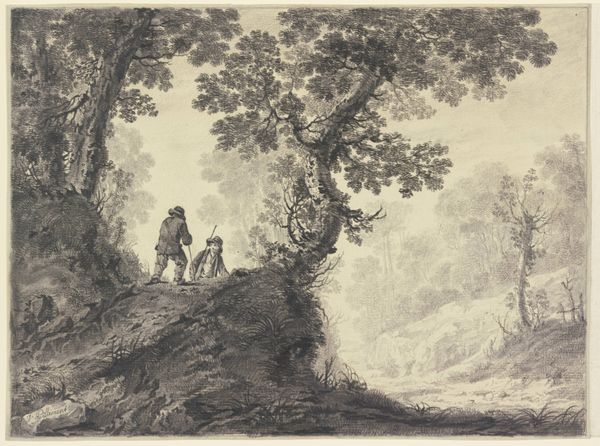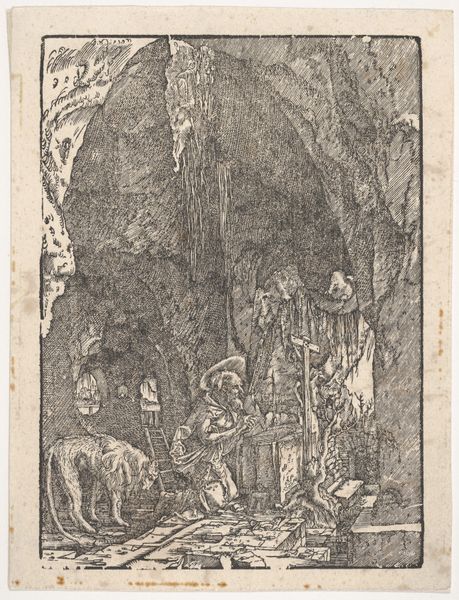
Hunters resting in a forest at night 1830 - 1860
0:00
0:00
drawing, print, charcoal
#
night
#
drawing
#
ink painting
#
animal
# print
#
landscape
#
charcoal drawing
#
forest
#
romanticism
#
men
#
charcoal
Dimensions: sheet: 3 7/16 x 4 15/16 in. (8.8 x 12.5 cm)
Copyright: Public Domain
Curator: This evocative drawing, dating from around 1830-1860, is attributed to Kilian Christoffer Zoll. Titled "Hunters Resting in a Forest at Night," it utilizes charcoal and other drawing mediums to bring to life a scene now residing at The Metropolitan Museum of Art. What strikes you about it? Editor: It feels quite melancholic, really. The darkness is almost oppressive, yet there's this small circle of light and companionship around the campfire that provides a small sense of hope and warmth against the imposing forest. Curator: Absolutely, and I think Zoll effectively captures the social realities interwoven with romanticism, right? The hunter, historically idealized as a symbol of masculine independence and skill, finds himself needing community even within this idealized landscape. The forest, often read as a space of freedom, can equally represent precarity, particularly for the laboring classes. Editor: That’s a great point about labor and class. This could certainly be read through a lens of precarity. There’s a clear division of labor visible here, and you have to wonder about the access to resources and land ownership. Did these hunters have the right to this land, or were they poaching? That brings in questions of environmental justice and who has the right to the forest. Curator: And notice, too, the almost sacramental arrangement around the fire. Light wasn't just functional here, it was about creating a community within this difficult space, solidifying identities through shared experience—in opposition to the looming uncertainty of the forest itself. It also emphasizes gendered labour – men around the campfire are commonly considered activities versus their roles within families, too, it raises interesting points around traditional forms of socialisation. Editor: It's fascinating how this seemingly simple scene is actually quite complex when we begin unpacking these layers. The romantic era, in general, masked complex relations of gender, race, and class beneath scenes of pastoralism, something clearly subverted here through the composition's intensity. Curator: Right. Zoll seems keen to depict a specific social situation through his rendering. Consider also the animals and horses rendered with such empathy, implying the necessary interaction between them in their struggle against exploitation to secure sustenance. This is not mere decorative pastoral scenery. Editor: Yes, it's so much more than a typical romantic landscape. Seeing Zoll’s rendering through this social and historical context makes the emotional impact of the artwork that much stronger. Thanks to his choices we can gain insight of these figures living inside and at the edges of a landscape undergoing transition. Curator: And in questioning the composition's potential challenges and realities, Zoll invites us to interrogate romanticism beyond idyllic escape.
Comments
No comments
Be the first to comment and join the conversation on the ultimate creative platform.
